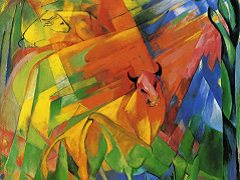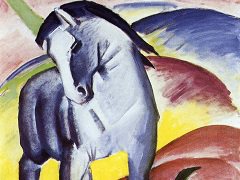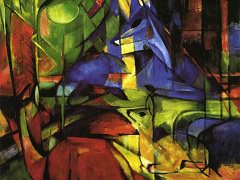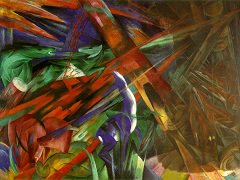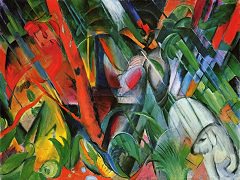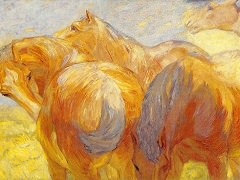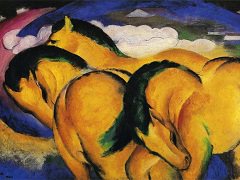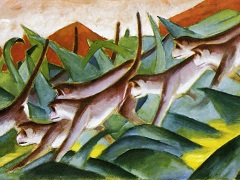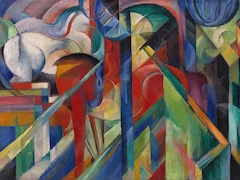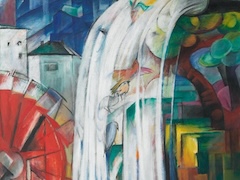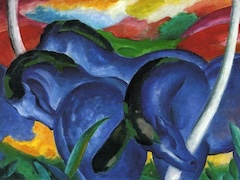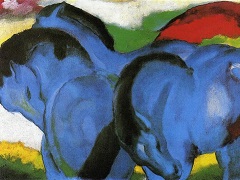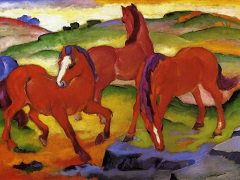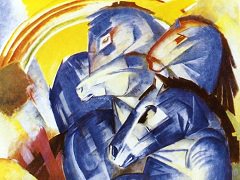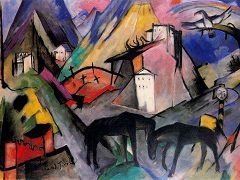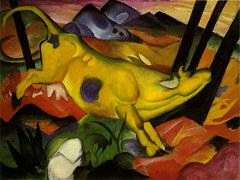Fighting Forms, by Franz Marc
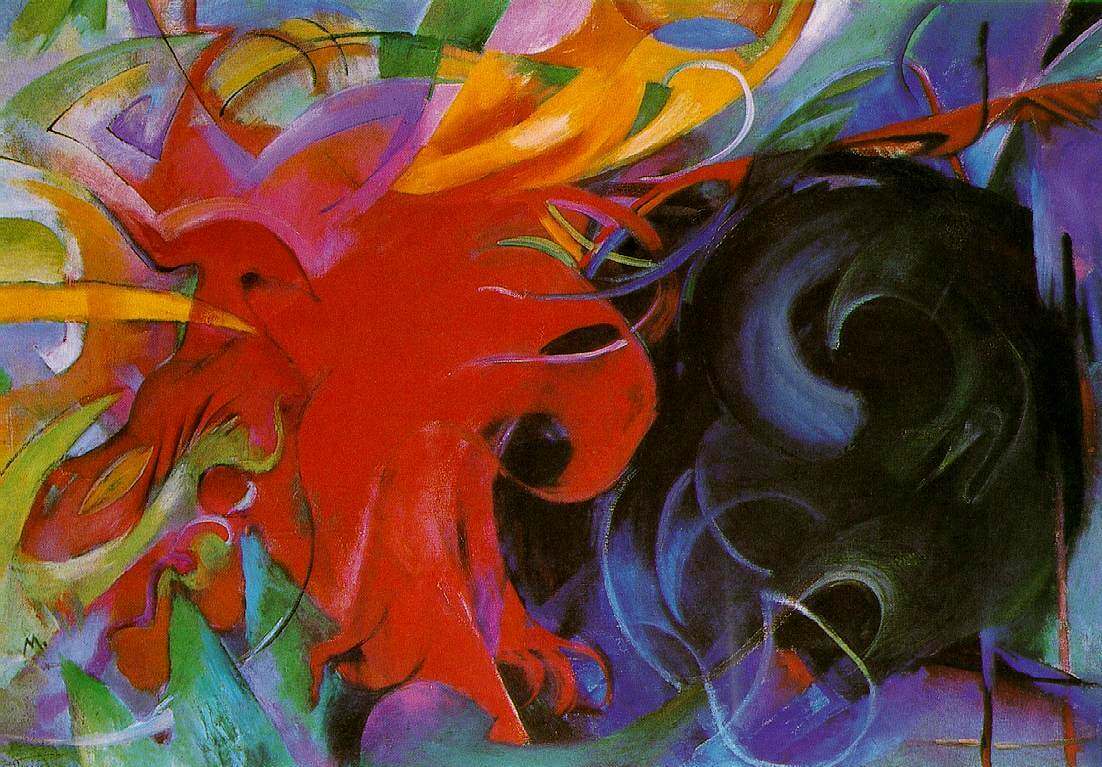
In Marc's very final works before the outbreak of the First World War, it is extremely difficult to identify any animals, since non-representational form and abstraction have taken over. One of his final major paintings is Kämpfende Formen (Fighting Forms) which is dominated by two swirling shapes, one red and the other black.
Painted at the start of the Great War, Fighting Forms (1914) is clearly the product of a country at war. We see in Marc's painting two opposing forces that are very obvious. This mentality was very common during World War I because of propaganda. Propaganda drove a wedge between good and evil, right and wrong. Fighting Forms perfectly expresses this belief. As Marc explains:"Objects speak: objects possess will and form, why should we wish to interrupt them! We have nothing sensible to say to them. Haven't we learned in the last thousand years that the more we confront objects with the reflection of their appearance, the more silent they become.
Franz Marc actually participated directly in World War I. Marc enlisted as soon as the war started in 1914. However, in an effort to keep protect the future of German art, many prominent artists of the time were taken out of action. Before the order reached Marc, he was killed near Verdun, France on March 4th, 1916.
Fighting Forms shows the influence of color symbolism, a technique that had been pioneered by Vincent van Gogh. While Van Gogh used an impulsive, gestural application of paint and symbolic colors to express subjective emotions, Marc use colors to humanize natural forms in the landscape, emphasizing his own interest in pantheism. Fighting Forms was Marc's last painting, which clearly indicated that he had abandoned figural painting.

